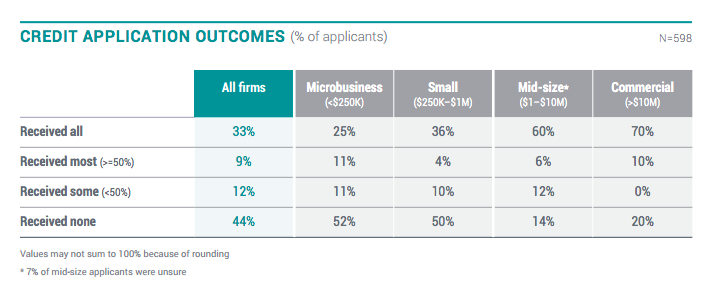How To Solve The Extended Payment Term Problem
Extended payment terms can be a huge burden for buyers and suppliers. Not to mention the negative press. But there is a solution at hand.

In response to the financial recession of 2008, many supply chain and procurement departments began pushing their suppliers for extended payment terms as a means to improve cash flow and limit the need to acquire credit, which was in short supply.
While the recession has long since past, the practice is still very much in use today. In fact, major companies such as AB InBev, Kellogg, Diageo, and Mars commonly establish payment terms that extend anywhere from 90 to 120 days. Additionally, a 2016 study revealed that buying teams are planning to extend their payment terms even further.
This push for extended payment terms makes sense for buyers. Extra cash in the coffers can be used to fund R&D, buy back stock, and invest in strategic initiatives. It also never hurts to have more free cash as working capital.
However, while buyers benefit greatly from extended payment arrangements, they can pose a tremendous burden to suppliers – especially small- to medium-sized businesses (SMBs).
How Extended Payment Terms Hurt Suppliers (And Buyers)
Extended payment terms can be detrimental to suppliers for a variety of reasons, including:
1. Curbed Productivity
Many SMB suppliers have limited resources in terms of manpower and production capability. As a result, they can only take on so many projects and contracts at a time before reaching capacity.
When funds are tied up waiting for cash to come in, these companies are precluded from investing in new equipment, replenishing stock or adding to their workforces. This brings the company to a standstill, and could put it out of business altogether.
2. Lack of Financial Flexibility
While large corporations and buying teams have the purchasing power to demand extended payment terms, smaller suppliers do not.
As a result, these suppliers are forced to receive payments late while paying their own suppliers early. This creates a cash flow crunch in working capital that many can’t escape.
In fact, most firms operate on a month-to-month basis with cash reserves built to last only 27 days.
3. Lower Employee Morale
In addition to the financial consequences of extending payment terms, the practice takes a human toll as well. Going three-to-four months without receiving payments from buyers makes it difficult for businesses to make their own payroll – usually the largest expense for a SMB.
As a result, small suppliers suffer from reduced morale and engagement. This can, in turn, lead to a decline in quality and production delays.
4. Limited Credit Options
With limited cash on hand, the only financial lifeline available to many SMBs is to apply for more credit. However, 50% of small businesses receive no money at all when they apply for credit loans.
 Source: Federal Reserve Banks of New York, Atlanta, Cleveland and Philadelphia
Source: Federal Reserve Banks of New York, Atlanta, Cleveland and Philadelphia
Extended Payment Terms Can Hurt Buyers, Too
In the end, buyers end up paying the price for extended payment terms as well. That’s because it introduces risk into their supply chains. If a trusted supplier is forced out of business or suffers a decline in productivity, it hurts the procuring organisation.
In addition, suppliers have long memories. Many will compensate for extended payment terms with higher costs, while others include steep late-payment penalties in their contracts.
Lastly, a high quality supplier whose products or services are in-demand supplier may simply choose to work with other companies that offer friendlier payment terms, and forego bidding new opportunities that come with onerous payment terms.
Reverse Factoring May Be The Solution
Reverse factoring allows a buying organisation to leverage its strong credit rating to acquire favourable financing, which is used to pay suppliers in a more timely manner.
Here’s how it works:
- Supplier submits the invoice to the buyer.
- Buyer approves the invoice and submits it to a 3rd party financial institution or factor, who bases interest terms on creditworthiness of the buyer.
- Financial institution pays the supplier at their desired early term of net 30 days, discounting the invoice payment by the agreed-to discount rate.
- Buyer pays the financial institution the face value of the invoice at their agreed-upon date, say net 90 or net 120 days.
The concept is fairly new, but it is already proving to be a great solution for buyers that want to reap the cash flow benefits of extended payment terms without putting their suppliers in jeopardy.
That’s because it is beneficial to every participant in the process. It allows both buyers and suppliers maintain cash flow while forging positive working relationships in the supply chain. The financial institution also benefits by generating a return on the funds lent to the supplier and reimbursed by the buyer’s payment.
Offering friendlier payment terms is just one way to build stronger relationships with suppliers. Discover more on how to improve your relationships with SMBs in our latest tip sheet.
Ed Edwards is Audience Outreach Manager at THOMASNET.com. He leverages his extensive experiences in engineering, manufacturing and procurement, to educate procurement and engineering professionals on how to streamline and improve their work.
Ed provides customised training to organisations’ engineering and sourcing teams and helps buyers with their challenges and finds them new opportunities.